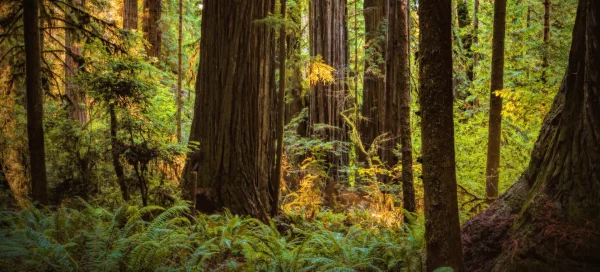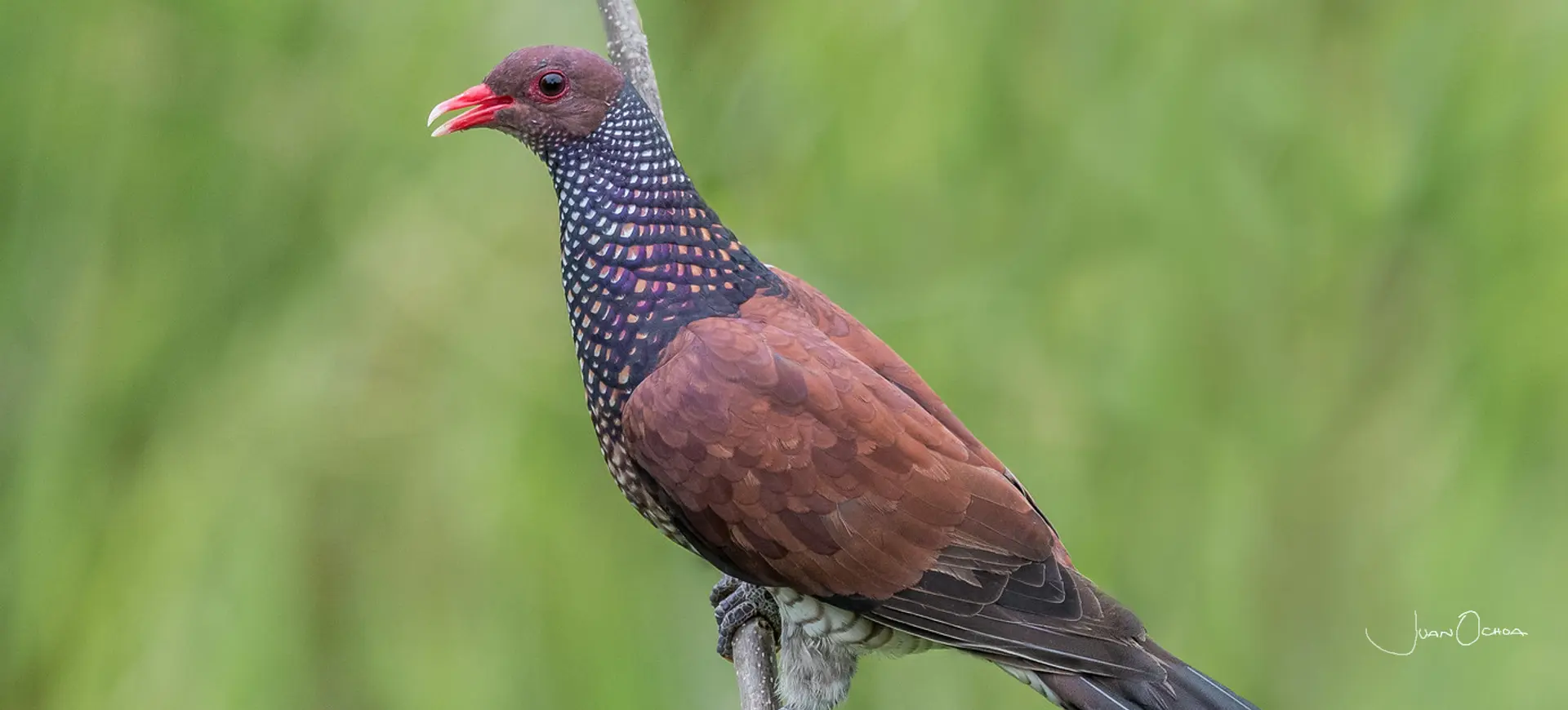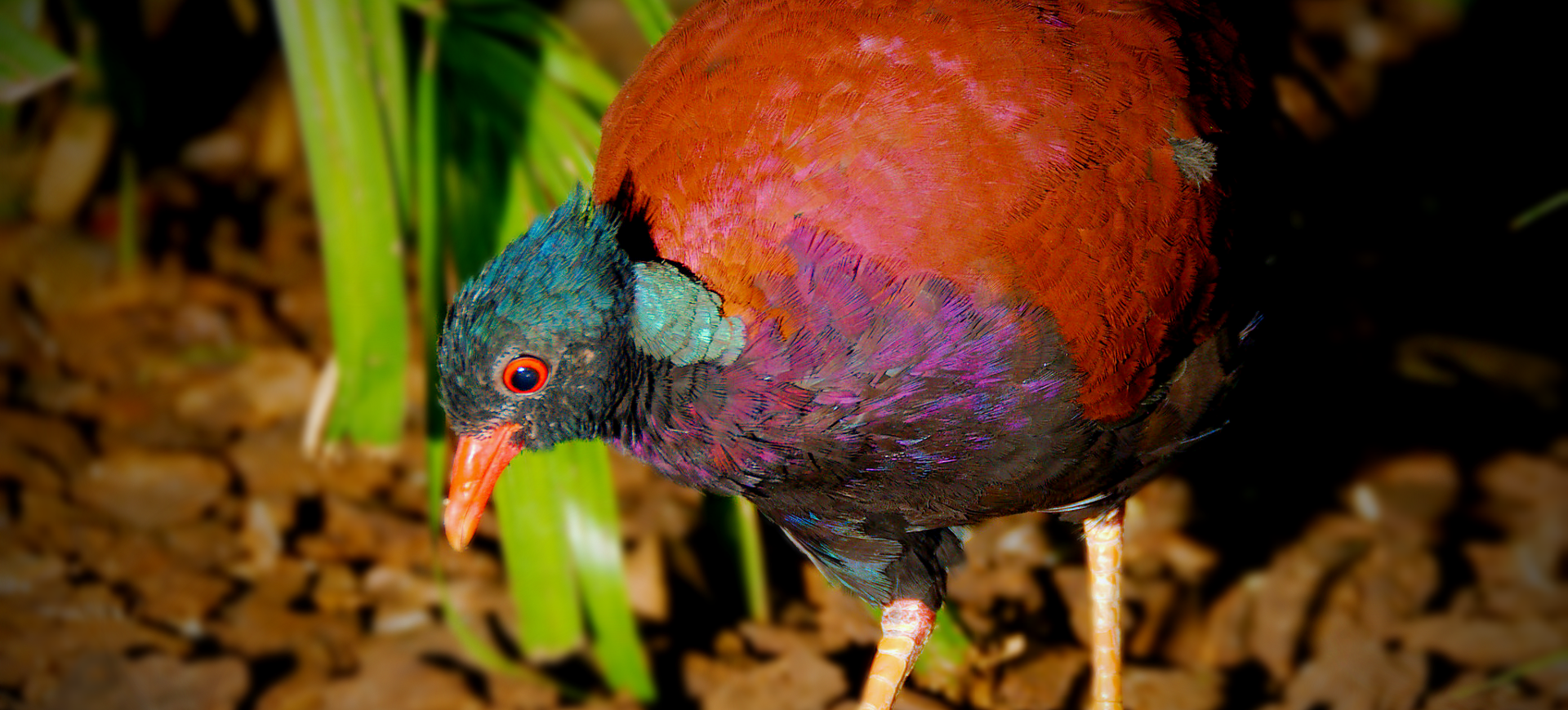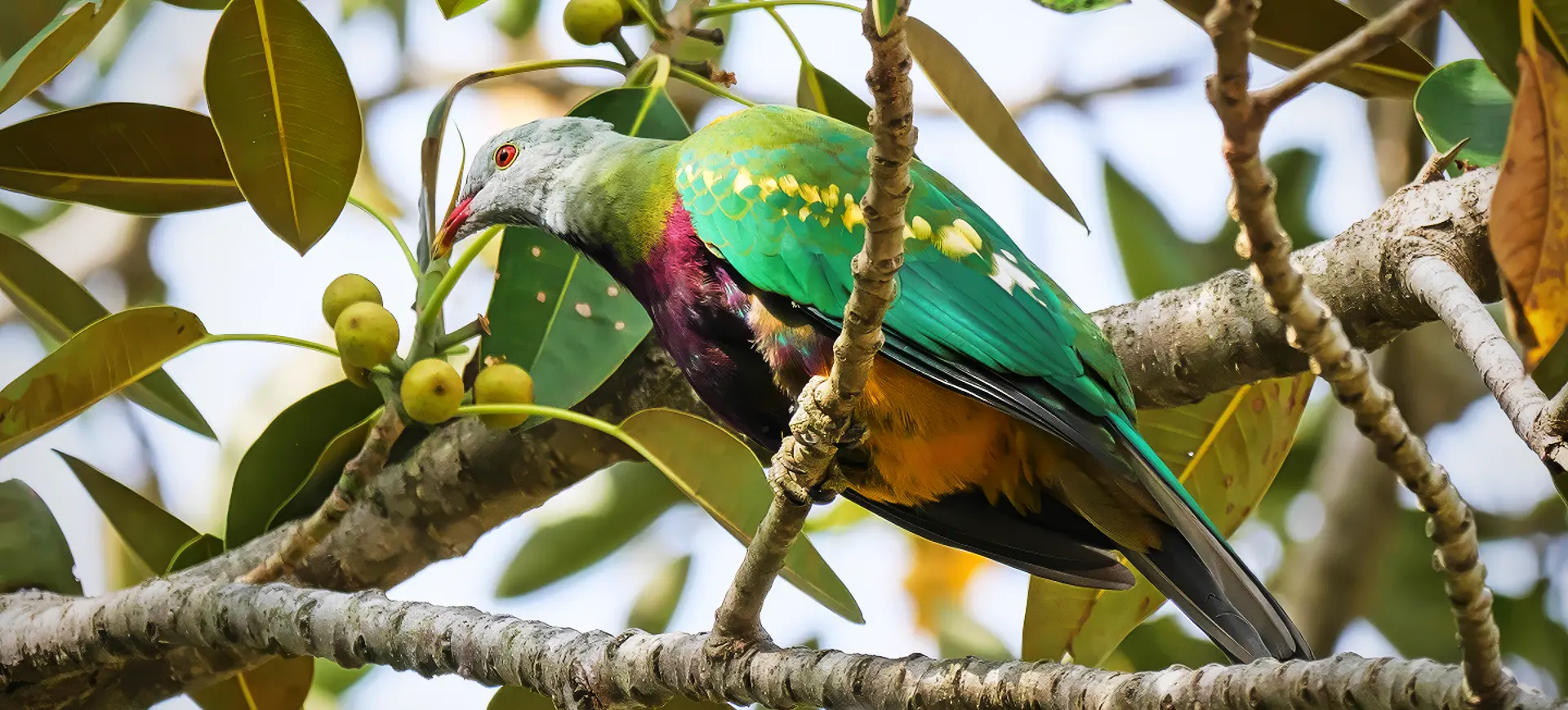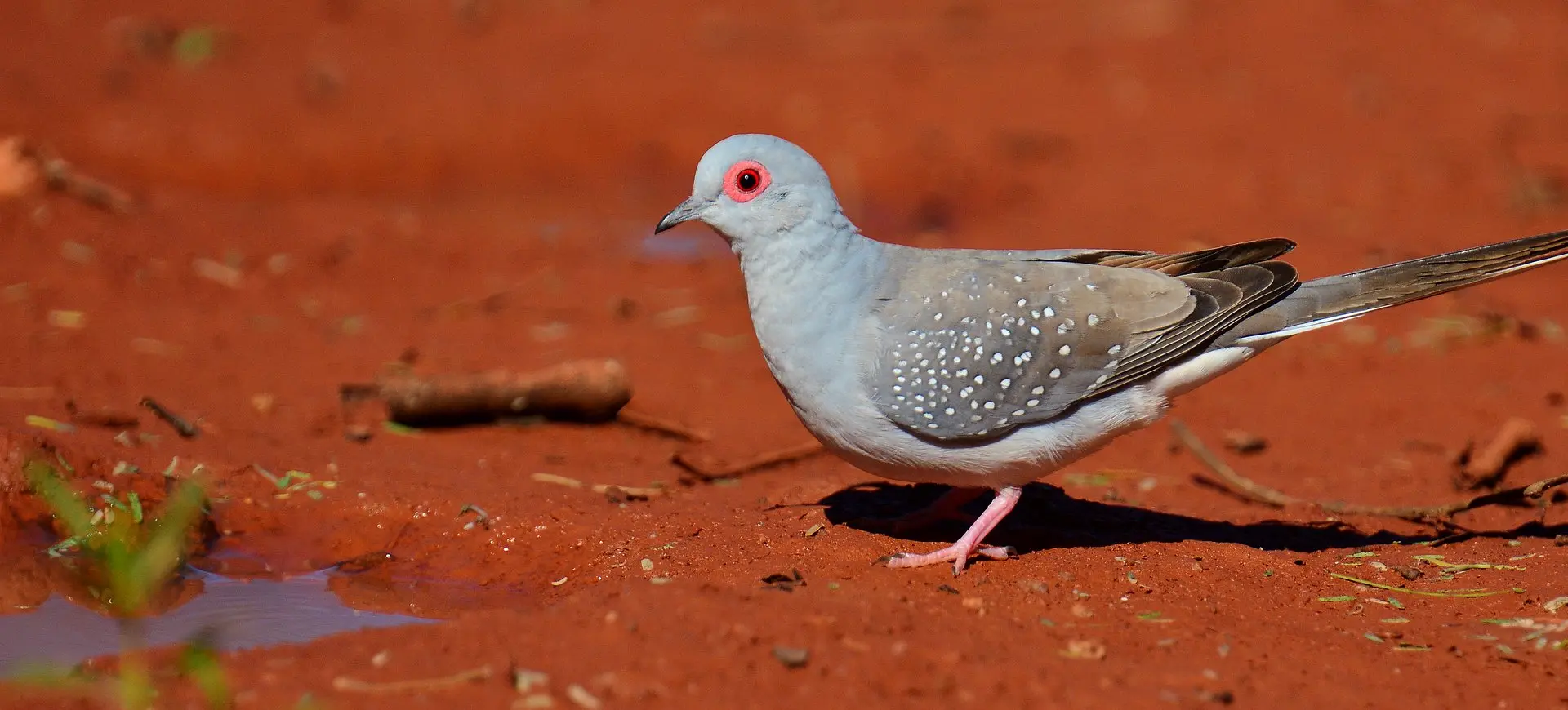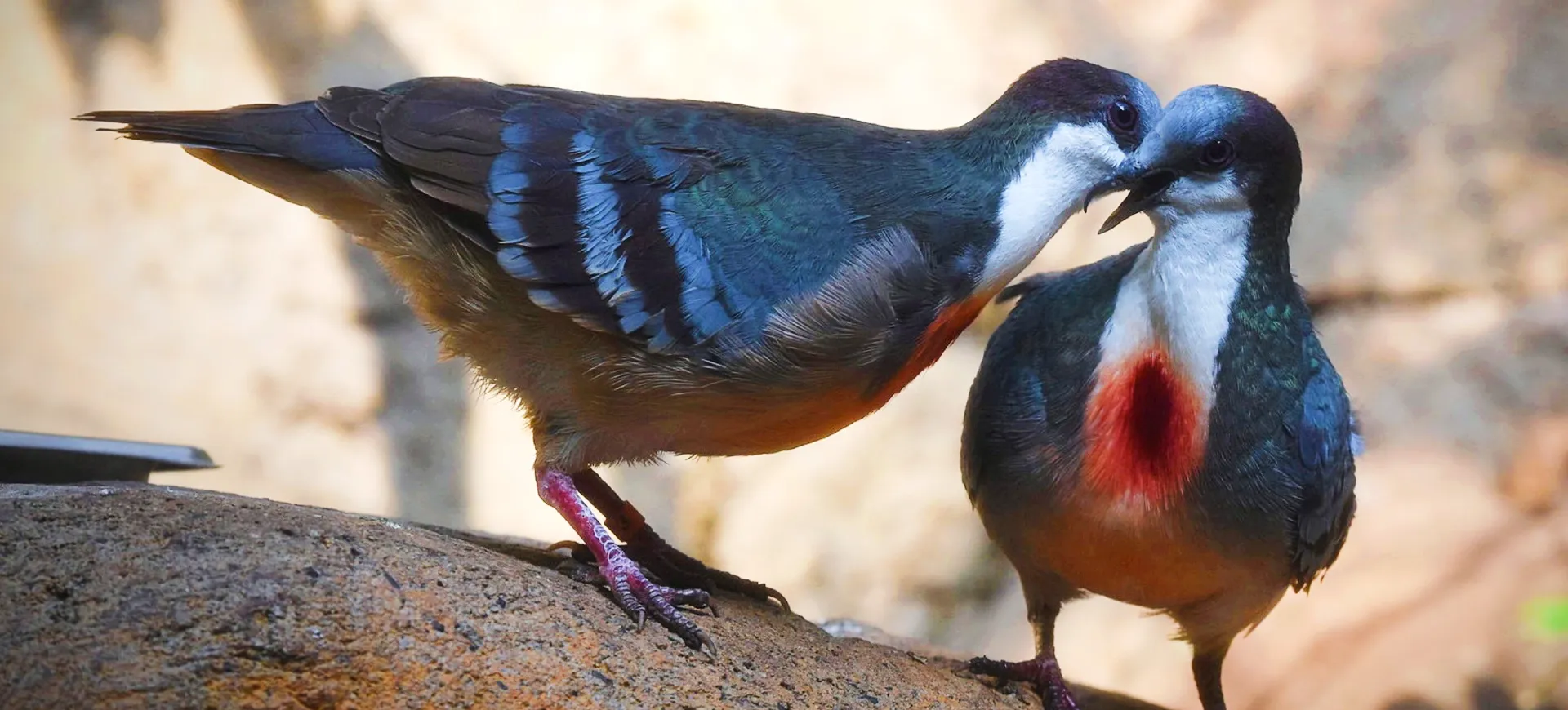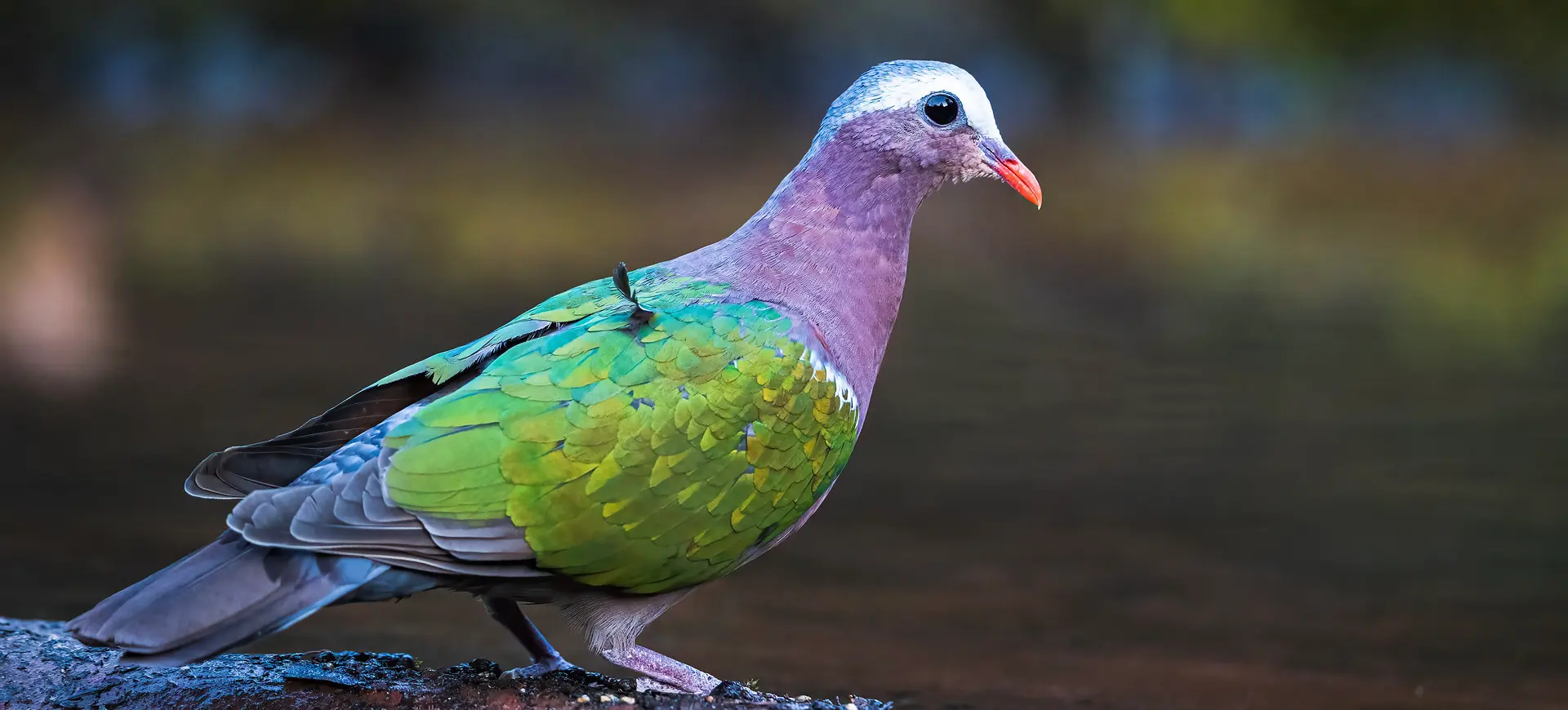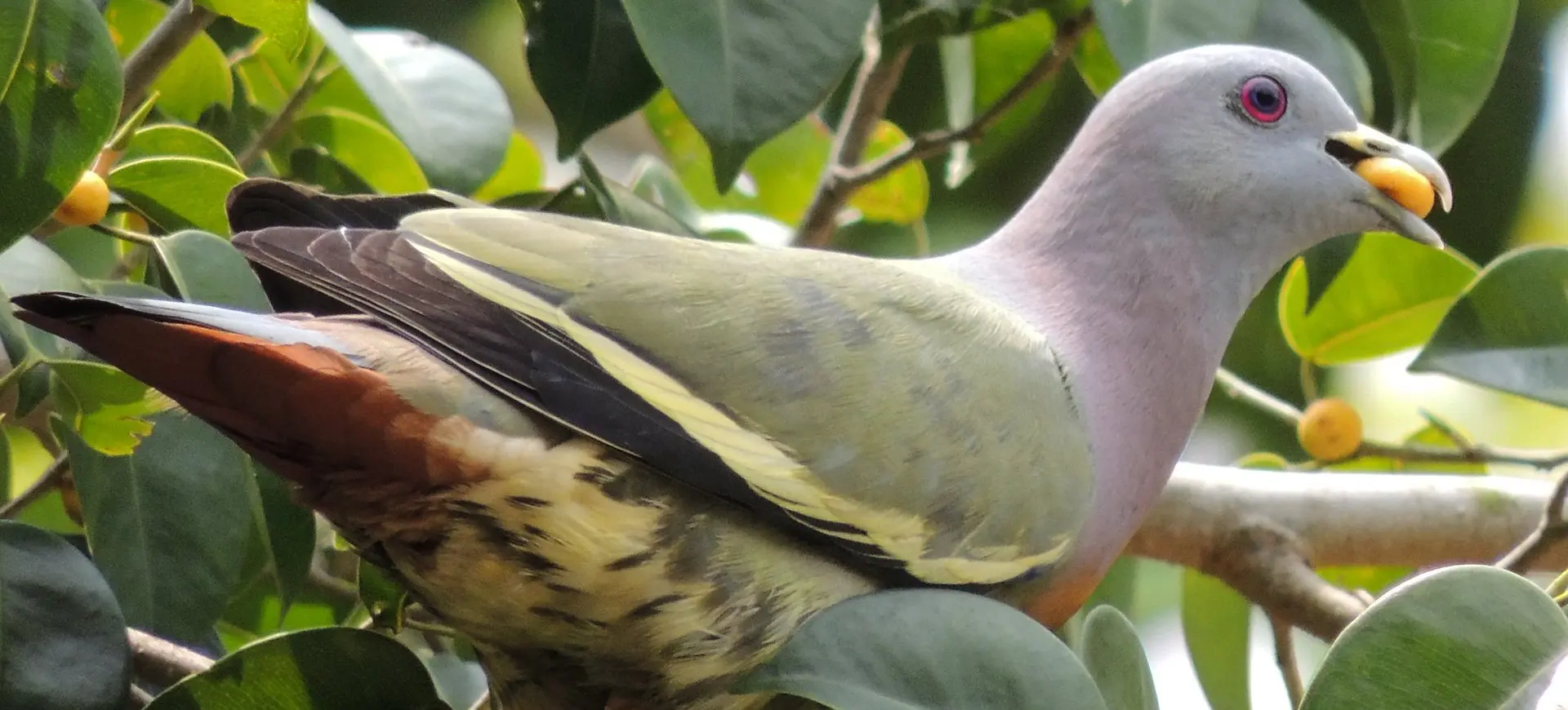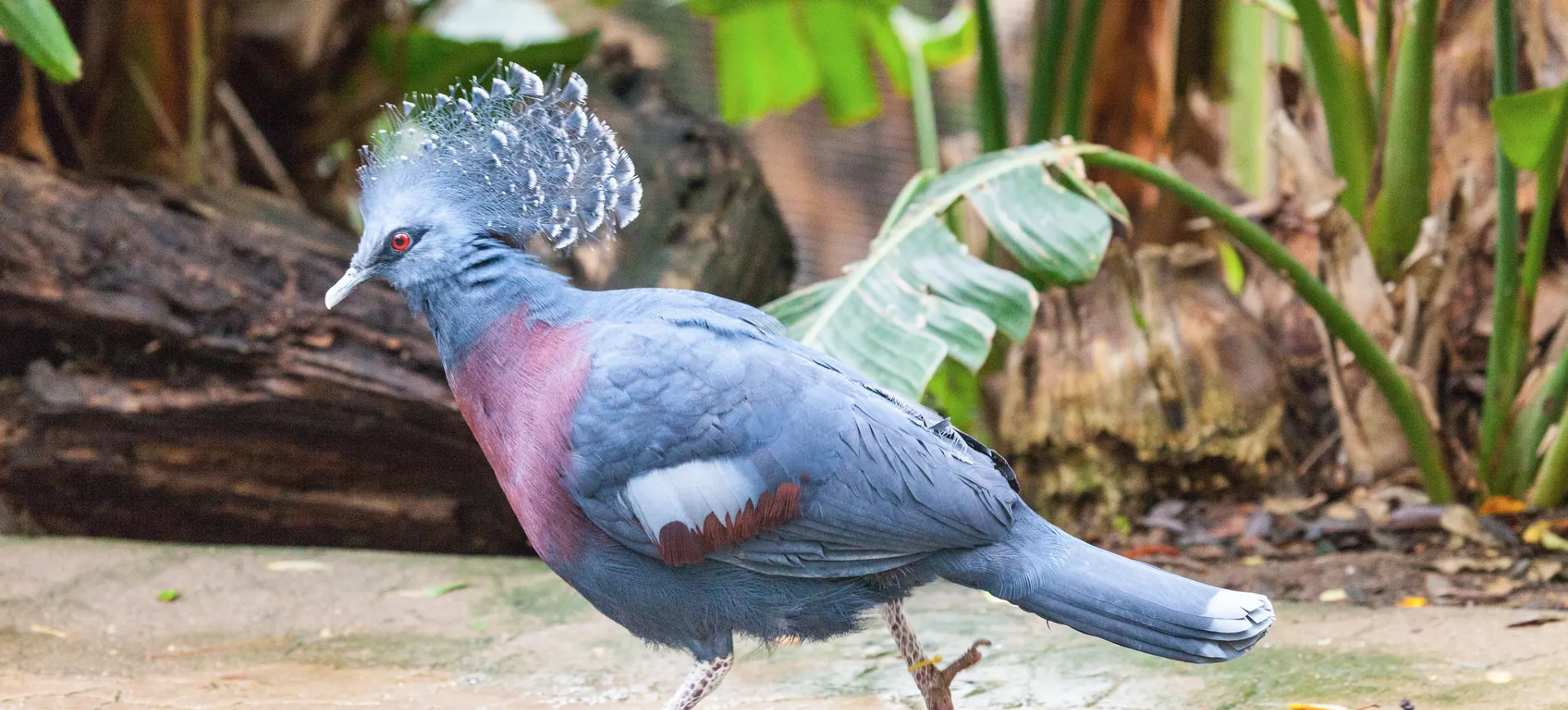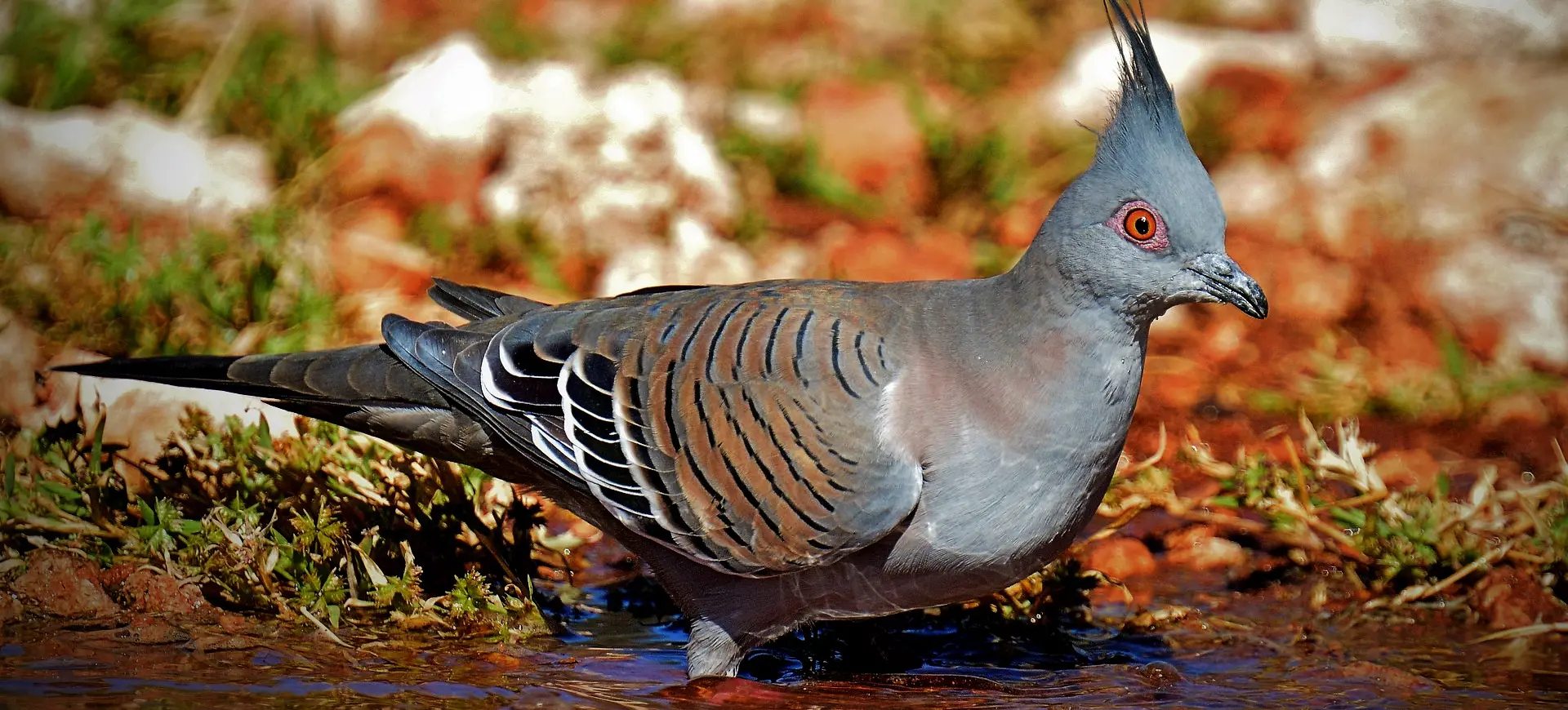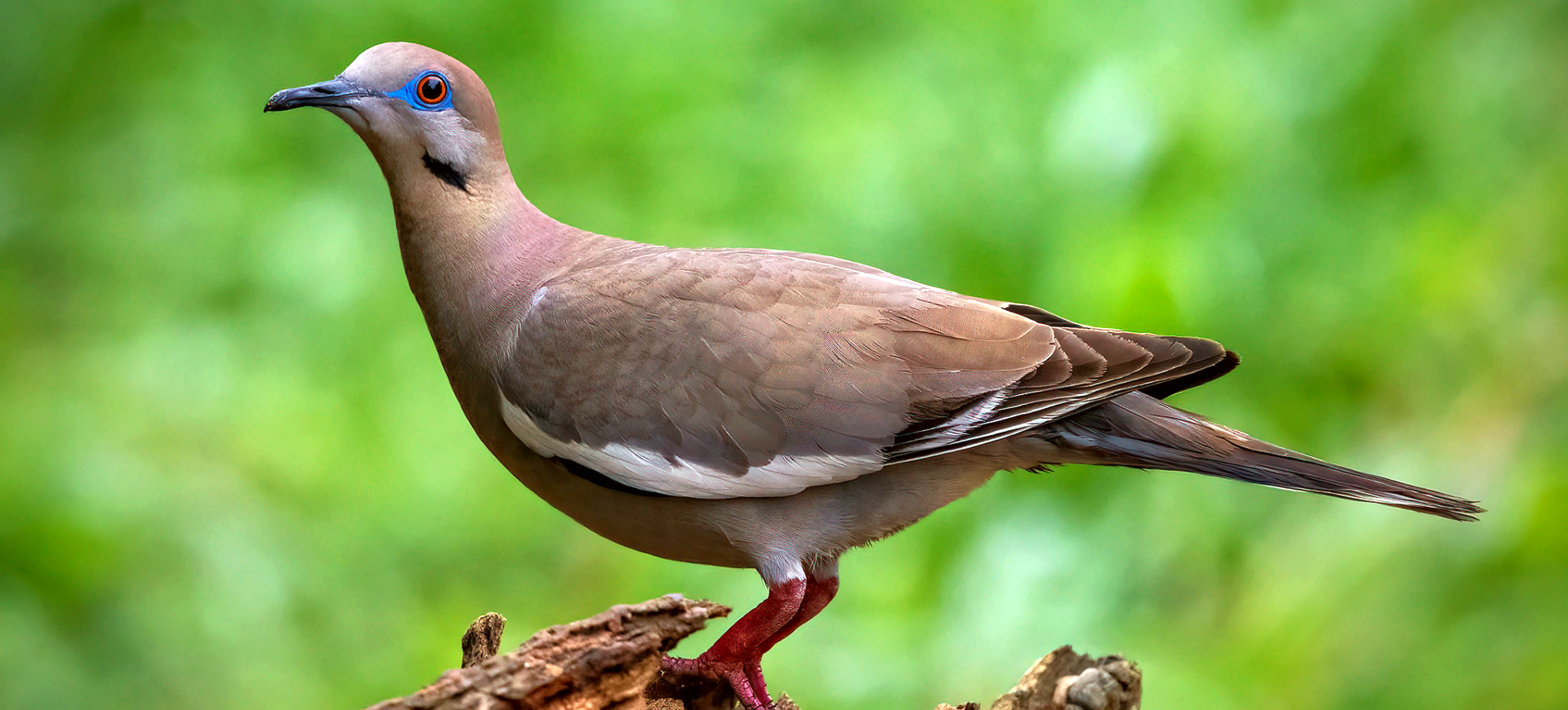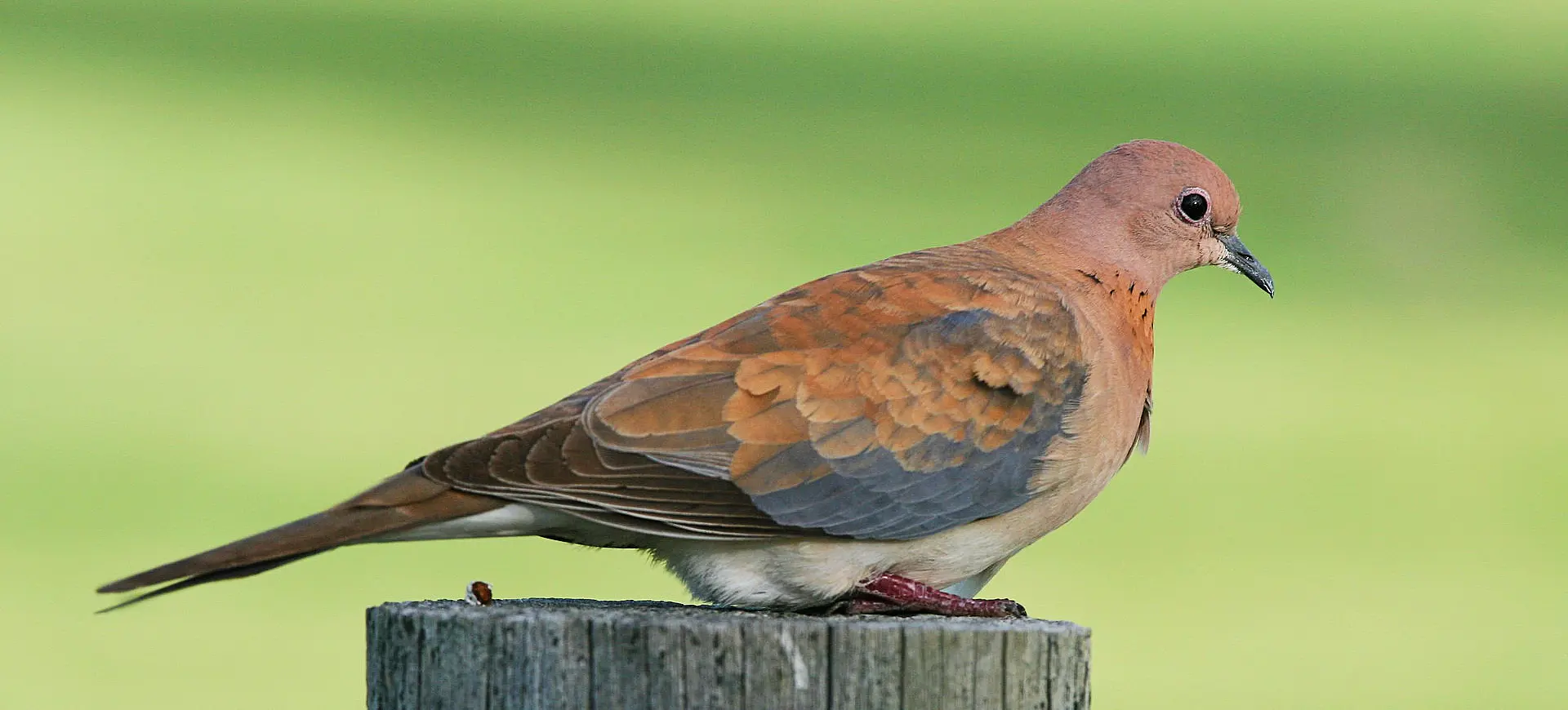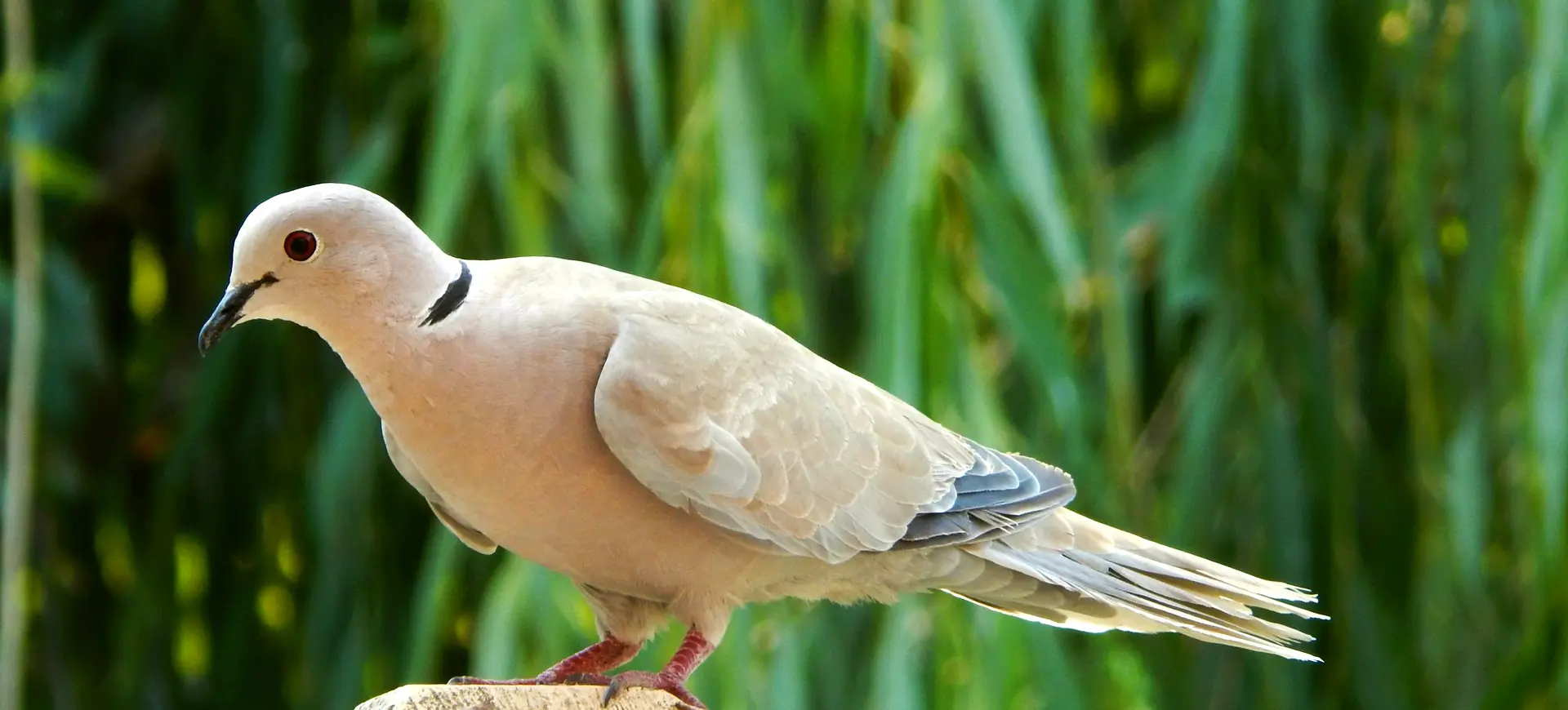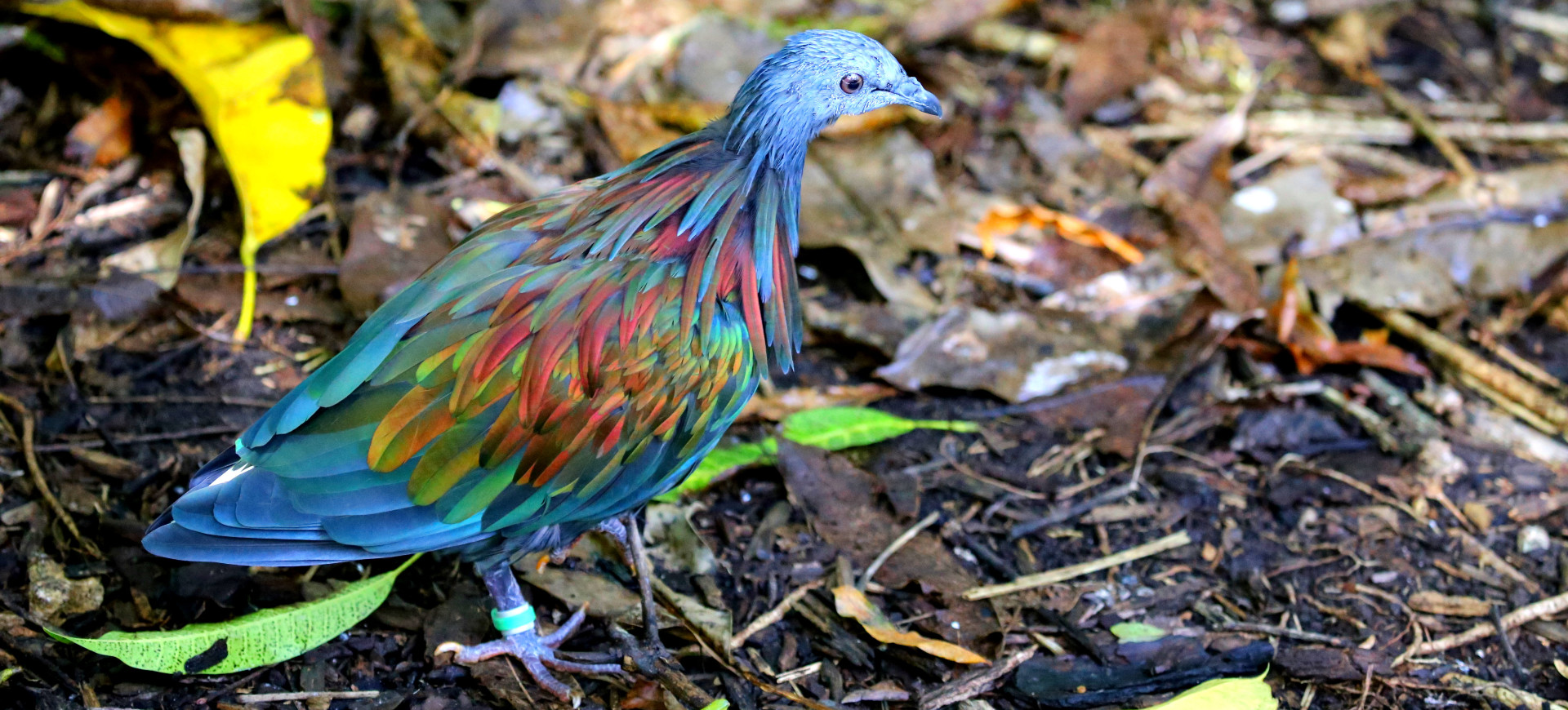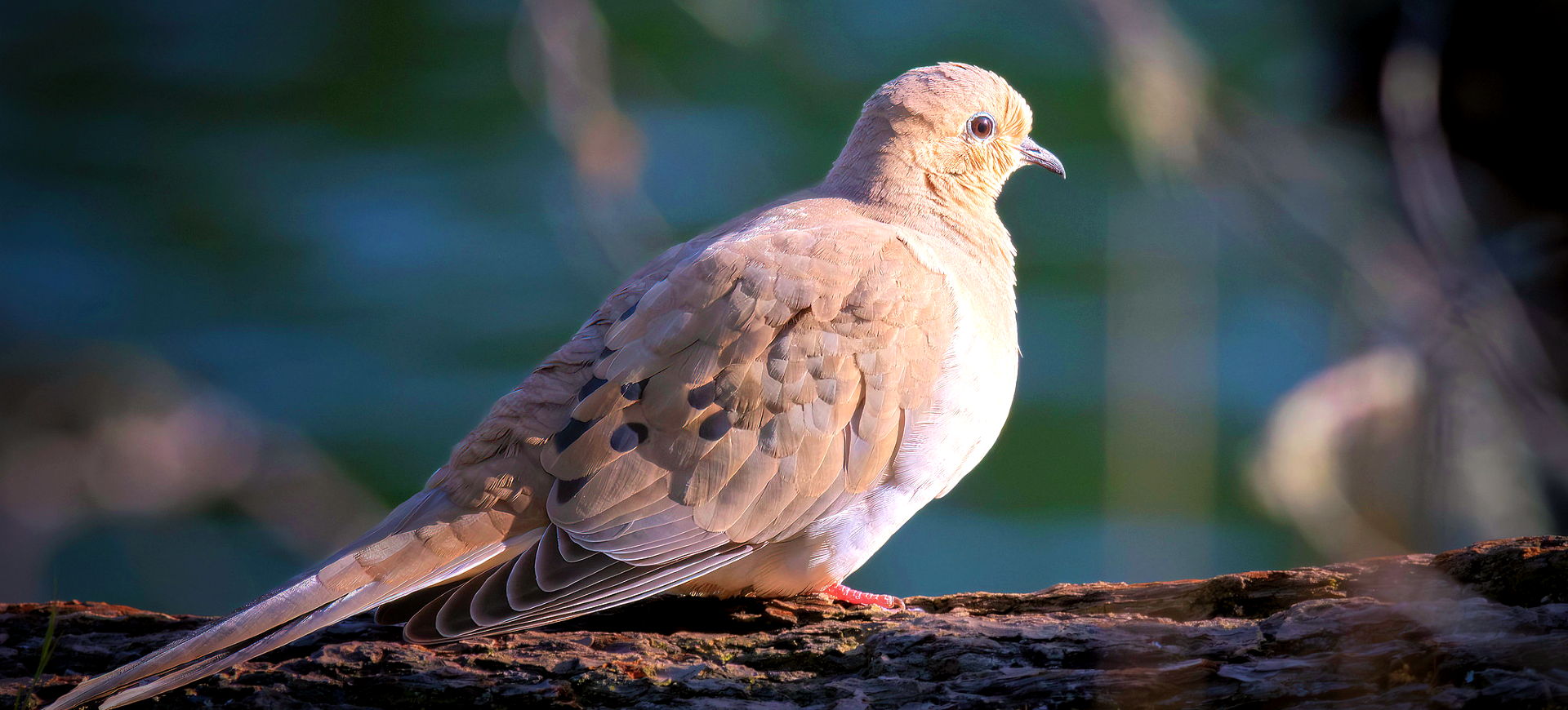Overview
The Wonga Pigeon, Leucosarcia melaleuca, is a distinctive bird species native to the eastern regions of Australia, renowned for its robust size, striking plumage, and unique vocalizations. Characterized by its soft blue-grey feathers, the pigeon sports a whitish underbelly marked with bold black bars, creating a stark contrast easily recognizable in its woodland and rainforest habitats. These birds are predominantly ground dwellers, favoring dense underbrush where they forage for seeds, fruits, and small invertebrates, demonstrating their omnivorous diet. The Wonga Pigeon’s strong territorial instincts are evident through their loud, repetitive calls, which resonate throughout their habitat, serving as a means of communication and deterrent to potential intruders.
Wonga Pigeons are known for their solitary or paired presence, rarely seen in large flocks, highlighting their preference for a more reclusive lifestyle compared to other pigeon species. Their breeding season showcases an intricate nesting process, where pairs construct a simple yet sturdy platform nest in a low tree or bush, indicating their adaptability and resourcefulness. Despite their robust nature, Wonga Pigeons face challenges from predation and habitat loss, with the fragmentation of forests posing a significant threat to their populations. Conservation efforts are crucial for preserving their natural environments, enabling these unique birds to thrive in the wild.
The Wonga Pigeon’s conservation status remains relatively stable, thanks to its wide distribution and adaptability to various habitats, including coastal forests, mountainous regions, and well-vegetated urban areas. However, continuous monitoring and habitat conservation are essential to mitigate the impacts of urban expansion and deforestation. Efforts to protect their habitats support Wonga Pigeon populations and safeguard the biodiversity of the ecosystems they inhabit. These pigeons are a vital component of their ecological community, contributing to their natural habitats’ seed dispersal and balance.
Taxonomy
Kingdom
Phylum
Class
Order
Family
Genus
Species
Type
Physical Description:
The Wonga Pigeon is a large, ground-dwelling bird, measuring between 40 to 41 centimeters, making it one of the larger pigeon species in its native Australia. Its plumage is predominantly blue-grey, with a distinctive pattern of white and black bars across its belly, providing a striking visual contrast. The bird’s head and neck feature a lighter grey, blending seamlessly into the darker shades of its upper body. Both males and females share a similar appearance, though males may be slightly larger and have more pronounced coloring.
Juveniles display a more muted color palette, with less defined barring on their underparts, gradually acquiring the vivid patterns of adulthood as they mature. The Wonga Pigeon’s stout body, short legs, and rounded wings are well-adapted for its terrestrial lifestyle, though it can have short, swift flights when necessary. Their strong, pinkish-red legs and feet enable them to easily navigate through dense underbrush, a key adaptation for their ground-foraging behavior. Despite their robust build, Wonga Pigeons are elusive, often detected by their distinctive calls rather than seen.

Lifespan: Wild: ~6 years || Captivity: Unknown

Weight: Male & Female: 1-1.5 lbs (450-600 g)

Length: Male & Female: 15.7-16.1 inches (40-41 cm)

Wingspan: Male & Female: 15-16 inches (39-40 cm)

Top Speed: Unknown
Characteristic:
Native Habitat:
The Wonga Pigeon is endemic to the eastern coastal regions of Australia, thriving in a variety of habitats, including dense forests, rainforests, and adjacent woodland areas. These environments offer the necessary resources such as food, water, and shelter, crucial for survival. They prefer humid environments where dense vegetation provides ample cover from predators and harsh weather conditions. The adaptability of the Wonga Pigeon to different environments has enabled it to occupy a wide geographical range, making it a common species in many of its habitats.
Their presence in a habitat indicates a healthy, biodiverse ecosystem, as they require a balanced environment for feeding, breeding, and shelter. The degradation of forests and woodlands poses a significant threat to their habitat, emphasizing the need for conservation efforts focused on protecting these areas. The Wonga Pigeon’s ability to adapt to human-modified landscapes has allowed it to survive in areas where natural habitats have been altered, highlighting the bird’s resilience. However, preserving natural forests and woodlands remains critical for the species’ long-term survival.
Biogeographical Realms:
Continents:
Countries:
Diet:
Diet & Feeding Habits:
He Wonga Pigeon’s diet is omnivorous, consisting mainly of seeds, fruits, and small invertebrates, which they forage from the forest floor. Their feeding habits underscore their role in the ecosystem as seed dispersers, contributing to the health and regeneration of their habitats. They feed in the early morning and late afternoon, utilizing the dense undergrowth to remain hidden from potential predators while foraging. Access to fresh water is crucial for survival, often influencing their proximity to streams and water sources within their habitat.
Their adaptability in feeding allows them to inhabit a range of forested environments, from lowland rainforests to montane regions. However, the Wonga Pigeon’s preference for foraging on the ground makes them vulnerable to predation, a risk mitigated by their cryptic coloring and stealthy behavior. Conservation of their natural habitats is crucial for ensuring the availability of food resources and the health of their populations. The feeding behavior of these pigeons highlights the interconnectedness of species within forest ecosystems, underscoring the importance of biodiversity conservation.
Mating Behavior:
Mating Description:
Wonga Pigeons are monogamous, with pairs often forming strong bonds lasting for several breeding seasons. Their courtship involves a series of elaborate displays and vocalizations, where the male exhibits various behaviors, including bowing and cooing, to attract a mate. They breed throughout the year, depending on food availability and suitable nesting conditions. The nest is a simple platform of twigs and leaves, typically placed in a low tree or bush.
The female usually lays two white eggs, which are incubated by both parents, showcasing their cooperative approach to reproduction. The chicks are altricial, requiring care and feeding from both parents until ready to fledge. This shared parental responsibility ensures the survival of the offspring, with the parents often fiercely defending their nest from potential predators. The breeding behavior of the Wonga Pigeon highlights their adaptability and resilience, enabling them to sustain their populations across a wide range of habitats.
Reproduction Season:
Birth Type:
Pregnancy Duration:
Female Name:
Male Name:
Baby Name:
Social Structure Description:
Wonga Pigeons are typically solitary or found in pairs, reflecting their territorial nature, especially during the breeding season. They demonstrate strong pair bonds, with monogamous pairs often remaining together throughout the year. Outside of breeding, they may form small flocks, particularly in areas with abundant food resources, where they can be seen foraging together on the ground.
The social interactions of Wonga Pigeons involve a range of vocalizations used for communication between mates and establishing territorial boundaries. Their ability to form lasting pair bonds is key to their reproductive success, ensuring parental care for their offspring. The social behavior of the Wonga Pigeon, characterized by its territoriality and strong pair bonds, plays a crucial role in their survival and reproductive strategy, highlighting the complexity of their interactions within their ecosystems.
Groups:
Conservation Status:
Population Trend:
TConservation authorities classify the Wonga Pigeon as the Least Concern, reflecting its extensive distribution and stable population trend. This status, however, does not diminish the importance of conservation efforts, as habitat destruction and fragmentation remain potential threats in certain areas. The bird’s adaptability to various environments has been crucial in maintaining stable populations, but preserving its natural habitats is essential for its continued survival.
Conservation efforts focused on protecting tropical and subtropical forests, woodlands, and rainforests are vital for the Wonga Pigeon and the biodiversity of these ecosystems. Monitoring populations and habitat quality can help identify areas where conservation action is needed. The bird’s widespread presence and adaptability make it a resilient species, but continued vigilance is necessary to ensure that environmental changes do not adversely affect their populations.
Population Threats:
The main threats to the Wonga Pigeon include habitat destruction and fragmentation due to logging, agriculture, and urban expansion. In some areas, predation by introduced species and hunting pose additional risks. The loss of natural habitats can lead to decreased food availability and nesting sites, impacting their ability to reproduce and sustain their populations.
Efforts to mitigate these threats involve habitat protection, sustainable land-use practices, and invasive species control. Public awareness and engagement in conservation activities can also significantly protect the Wonga Pigeon and its habitat. Addressing the challenges of habitat destruction and environmental change is crucial for the preservation of this species and the ecological balance of their habitats.
Conservation Efforts:
Conservation efforts for the Wonga Pigeon include habitat protection and restoration projects aimed at preserving and enhancing the quality of their natural environments. Initiatives such as replanting native vegetation, controlling invasive species, and protecting key breeding and foraging areas are critical for their survival. Establishing protected areas and implementing land management practices that benefit a range of native species can also contribute to the conservation of this pigeon.
Engagement with local communities and stakeholders is key to the success of conservation initiatives, promoting practices that benefit both wildlife and people. Educational programs that raise awareness about the importance of biodiversity and the role of species like the Wonga Pigeon in their ecosystems can foster support for conservation efforts. By working together, it is possible to ensure the long-term survival of the Wonga Pigeon and the rich biodiversity of tropical and subtropical regions.
Additional Resources:
Fun Facts
- Wonga Pigeons are known for their distinctive “whoop” call, which can be heard echoing through their forest habitats, especially in the early morning and late evening.
- They can make long-distance flights, although they prefer to stay within their territorial boundaries.
- Their cryptic plumage helps them blend into the forest floor, making them difficult to spot despite their relatively large size.
- In addition to seeds and fruits, Wonga Pigeons occasionally eat small insects, showing their opportunistic feeding behavior.
- Their nests are often reused for multiple breeding attempts within the same year, demonstrating their resourcefulness.
- Despite their preference for solitude, Wonga Pigeons can become quite tame in urban environments, visiting gardens for food.
- They play an important role in their ecosystems as seed dispersers, contributing to the health and regeneration of forests and woodlands.
- Conservation efforts for Wonga Pigeons also benefit other species that share their habitat, demonstrating the interconnectedness of ecosystem health and biodiversity.




